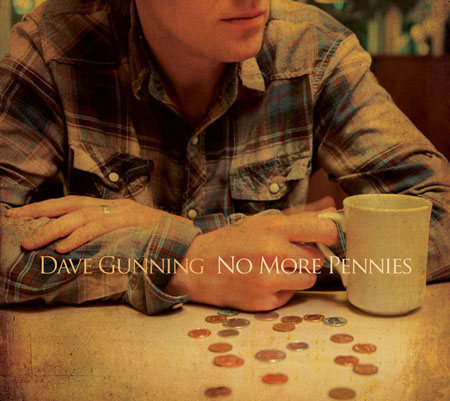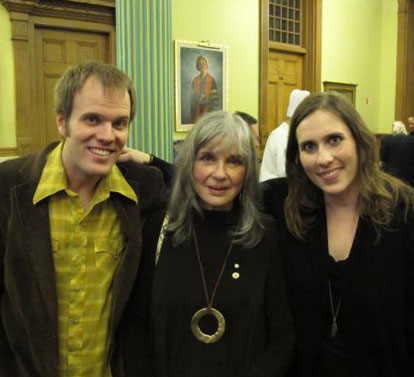Mint’s change of heart over Dave Gunning’s “No More Pennies” CD good .. but Canadian people still short-changed
Sep 14th, 2012 | By Citizen X | Category: In BriefI was getting all steamed up. I was ready to add my own obscure voice to the wider protest over the Canadian Mint’s insistence that Dave Gunning, the “Canadian Folk/Celtic singer-songwriter born in Pictou County, Nova Scotia,” must pay a copyright fee for the use of images of pennies on the cover of his next CD album, “No More Pennies.”
(If you really want to know the deep background here, see, eg : “Canadian Mint nickel-and-dimes musician over use of penny image” ; and/or “Nova Scotia musician warned by Mint for using pennies on CD cover.”)
Then a last quick check on the relevant Google News dragged up this just-posted item on the CBC website: “N.S. musician won’t need to pay mint for penny image …Â The Royal Canadian Mint has had a change of heart over charging Nova Scotia musician Dave Gunning for using an image of the penny on his album cover … Mint spokeswoman Christine Aquino says it will no longer be charging Gunning a fee for every album he issues of his soon-to-be-released recording No More Pennies.”

Niki Veniot strums Dave Gunning's guitar while he fingers the notes, at Pictou-Antigonish Regional Library’s second annual song-writing contest for teens, October 2009.
The item went on: “The Ottawa-based maker of Canadian coins already had waived its copyright fee on the use of the penny image for the first 2,000 copies of the album, coming out Sept. 18 … But it wanted $1200 for each subsequent 2,000 pressings of No More Pennies, which Gunning conceived as a tribute to the vanishing coin … The mint released a statement saying it supports the arts in Canada and proposing a review of its own intellectual property policies … ‘The mint will assess our current intellectual property policy to determine if changes need to be made to ensure that it is being applied fairly on a case-by-case basis while protecting the interests of Canadians,’ the statement said.”
* * * *
The end of the story here, of course, is almost all good. And I’m especially happy to hear myself that the “mint will assess our current intellectual property policy to determine if changes need to be made.” I do think, however, that there are a few continuing reasons for concern about just what this assessment will finally involve.
Most of these reasons have been summarized nicely in a National Post piece by Jesse Kline: “The Canadian dollar is not the only major currency protected by copyright – the British Pound and the Euro also feature copyright notices. But the idea that the government can own the copyright on its works is a concept that’s completely foreign to Americans and citizens of many other countries … Under this country’s [ie Canada’s] Copyright Act, all government works ‘belong to Her Majesty’ and remain copyrighted ‘for a period of fifty years following the end of that calendar year.’ This is known as ‘Crown Copyright,’ which is different from how public works are handled in countries such as the United States, where government documents are automatically put into the public domain … More than an issue of government bureaucrats refusing the bend the rules, this case [ie the Mint and Dave Gunning’s CD cover] highlights one of the many problems with Crown Copyright. Namely, that our currency is a symbol of, and should belong to, the people of Canada, not the government.”
What I finally think myself is that this case also illustrates yet another reason why we ought to be thinking very seriously about finally retiring the British monarchy in Canada. Some still say the offshore monarchy in this country is a harmless bit of nostalgia, and not worth worrying about. But in a Canadian republic focused more clearly on what section 1 of the 1982 Canadian Charter of Rights and Freedoms alludes to as our present-day “free and democratic society”, our currency – and everything else our governments “produce” – would more clearly belong to the Canadian people. And government bureaucrats wouldn’t be so tempted to think that what they do somehow belongs to a mysterious thing like “Her Majesty” (which, since Her Majesty does not actually do anything nowadays, and in any case lives far far away, really means the government bureaucrats themselves)Â – instead of the people who pay their salaries!

Dave Gunning displays the East Coast Music Award he won in Charlottetown in April 2011 for for his album A Tribute to John Allan Cameron.
No doubt the “Royal” Canadian Mint’s “review of its own intellectual property policies” is not going to come up with a recommendation to politely retire the British monarchy in Canada, at the end of the present Queen’s reign. Yet if the case of the obsolete penny and Dave Gunning has nonetheless finally made you wonder just who Dave Gunning really is (which it did to me as well), I can conclude by helping out a little here. According to Wikipedia, “Dave Gunning is a Canadian Folk/Celtic singer-songwriter born in Pictou County, Nova Scotia,” who “credits the first live concert he ever observed, a 1981 double bill of John Allan Cameron and Stan Rogers, to be a major driving force in shaping the direction his life would take as a musician.” Compliments of the remarkable You Tube, here are four of his tunes: “Here She Comes A Running” ; “Daddy’s Beer” ; “Saltwater Hearts” ; and “Made on a Monday.” And, suitably enough, Dave Gunning’s work at least seems closer to the Canadian people, than it does to “the Crown” or “Her Majesty” or the “Royal Canadian Mint” in Canada today.



